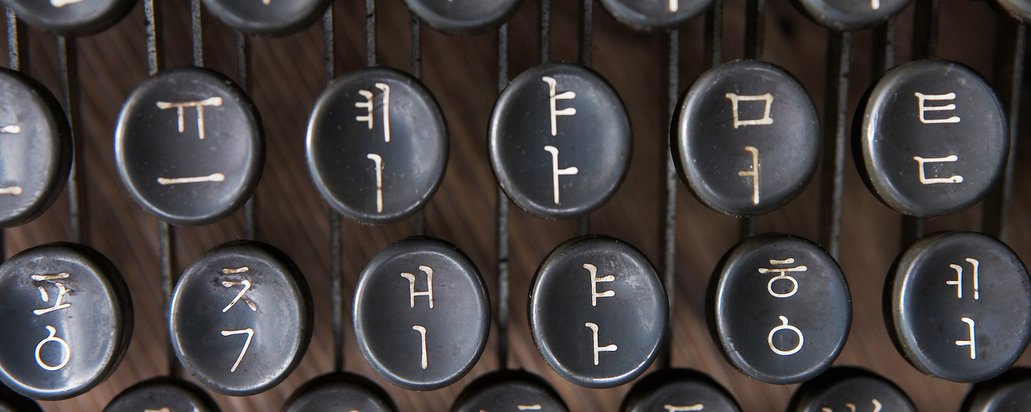Hangeul, a Script with No Equal

KCCUK Culture Series
With many of our events and educational programmes now suspended due to Covid-19, we’re bringing you a regular slice of Korean culture through our Culture Series.
Following an increase in the number of people interested in learning Korean in the UK, the KCCUK has been running Korean language courses at a range of levels since 2008. Through this introduction to the Korean alphabet or hangeul, we hope to provide some inspiration for those of you stuck at home and using the extra time to study Korean.
Image © Korea Tourism Organization
Proper sounds for the instruction of the people
“I have created 28 letters because I felt compassion for the people who cannot express their thoughts.” – King Sejong, Hunminjeongeum
Hangeul is the name for the Korean phonetic alphabet, and can be translated as ‘a unique script with no equal in the world.’ Its uniqueness is reflected in the story of its invention in 1443 by King Sejong, the fourth monarch of the Joseon Dynasty.
There are debates as to how far King Sejong alone can be credited with this impressive invention. Evidence suggests that the King’s advisers were opposed to the replacement of Chinese characters with a new phonetic script, and that he was compelled to work in secret.
The King felt that the use of Chinese characters to represent the Korean language was the reason for widespread illiteracy among the people, which prevented them from presenting their demands and grievances in writing. He was determined to create a unifying, comprehensive and scientific alphabet that incorporated regional dialects and could even be used to represent foreign words.
He announced his invention through the document Hunminjeongeum, ‘proper sounds for instruction of the people’ – which is also the original name for hangeul.
King Sejong’s achievement is celebrated annually on the 9th October, Hangeul Day, by the Korean people and students of Korean around the world.
Tree with Deep Roots
If you’re interested in the story behind the invention of hangeul, you might enjoy the Korean drama Tree with Deep Roots which is available to stream in the UK on Netflix.
The drama takes its name from the poem Songs of the Dragons Flying to Heaven (Yongbieocheonga), the first poem written in hangeul, whose famous first line claims that “A tree with deep roots is not swayed by the wind.”
Set in the early years of King Sejong’s reign, the drama tells the story of a royal guard (played by Jang Hyuk) investigating a case involving the serial murders of scholars in Gyeongbok Palace while King Sejong (played by Han Suk-kyu) overcomes a series of obstacles in his determination to create the Korean written script.
The science and philosophy behind hangeul
King Sejong’s invention of hangeul was based not only on his love for the people but on his profound anatomical knowledge and philosophical beliefs.
The form of each basic consonant reflects the shape of the vocal organs when pronouncing that letter. Based on these letters, the remaining consonant letters were created by adding extra strokes. Finally, the consonantsㄲ, ㄸ, ㅃ, ㅆ, and ㅉ are stressed versions of the consonants ㄱ, ㄷ, ㅂ, ㅅ, and ㅈ. The anatomical knowledge required to create these letters is seen as incredibly advanced, even from the standpoint of modern medicine.
The creation of the vowels in hangeul reflects traditional East Asian philosophy, which views the sky, earth and humanity as the three fundamental elements. The vowel ㆍ (which is no longer used) represents the wide sky, the vowel ㅡ represents the earth, and the vowel ㅣ represents a person. These three basic letters were then combined to form the 10 basic vowels.
The logical principles behind hangeul mean that most people find it relatively straightforward to learn. As the King himself said of his newly created letters: "a wise man can acquaint himself with them before the morning is over.”
Ahn Sang-Soo: The typographer spreading hangeul across the world
Many Korean learners are familiar with King Sejong, but you may not have heard of Ahn Sang-soo, the visual designer and typographer behind the popular “Ahn Sang-soo” typeface. Ahn’s groundbreaking graphics led to the modernisation of the hangeul alphabet and earned him a Gutenberg Prize awarded by the city of Leipzig, Germany, in 2007.
When asked the reason for his fascination with hangeul, Ahn compared it to a romantic relationship. Before creating his eponymous typeface in 1985, he joined the software company Hangeul as a researcher, curious and driven. At some point, he realised that he had fallen blindly in love. It filled him with immense pride to know that he belonged to a society that had invented such a remarkable alphabet.
“Letters are the key to how much of a culture can be preserved, and how much it will shine in history. The same goes for hangeul. If hangeul had not been invented, would Korea even exist? Korean culture maybe would not have developed.”
Read more (Korea Webzine 2018 February)
Learn Korean at home
If you’re stuck at home with a little more time on your hands, why not take the opportunity to try learning some Korean?
For those looking to familiarise themselves with the Korean alphabet, the virtual Hangeul Learning Center provides some useful resources for learning to read and write hangeul from scratch.
The King Sejong Institute is a great place to look for online resources, from the introductory course on their website, to their mobile learning app and vast range of educational YouTube videos. To learn some useful phrases for your trip to Korea, you can check out this digital booklet of Practical Korean Expressions for Foreigners.
Once you’ve mastered the basics, have a go at practising your Korean listening skills while learning more about Korean culture – we’d recommend the Korean Culture Portal and K-Heritage TV (by the Korean Cultural Heritage Foundation), two educational online channels with interesting content and English subtitles.
And for any K-Pop fans out there who haven’t heard yet, boy band BTS have launched a web series called Learn! Korean via the social media app Weverse to help their fans overcome the language barrier.
We hope you’ll find these resources useful. To all Korean learners, wherever you are: Hwaiting (화이팅)!





